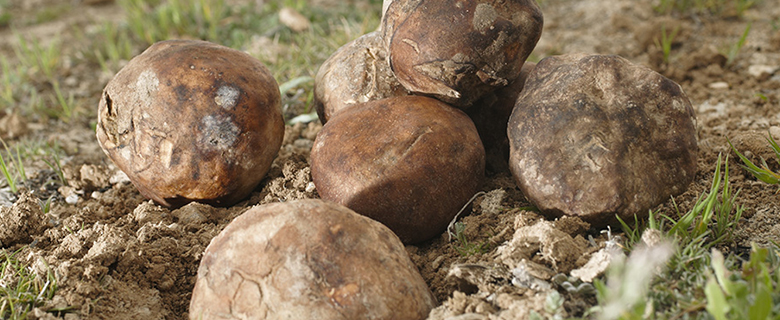
This blog post is part of a series of blog posts written on the occasion of Qatar National Day. Read the first post here, the second one here and the third post here.
The sun burns low in a hazy January sky as my family arrives at the sand dunes near Kharrara, in southeastern Qatar. It is the same spot we chose almost twelve years ago on our first desert campout, and to this place we return year after year, hoping to build some semblance of tradition into our transitory, expatriate lives.
Winter camping has brought me spaces of quiet, freedom from distraction, and an awareness of gifts unknown from our life in bustling Doha. Gifts like tracing Orion in the night sky, hearing a desert mouse skitter across the sand, witnessing a beetle’s slow trudge up the dune, recognizing a warbler’s morning call.
But today, against this backdrop of familiarity, a new set of figures on the horizon catches my eye. Not the usual camels or cars, but people roaming the desert, hunching over, now stooping. I lift a hand and shade my eyes, taking in the forms dotting the landscape. Slowly, it dawns on me. Early January in the desert: mushroom hunting.
We have unknowingly camped next door to one of the most popular spots for finding desert truffles in Qatar. The local word for these prized mushrooms is faga’a (فقع), a commodity so rare that in markets and roadside stalls, a half kilo of sand-caked morsels retails for 400 riyals. With a smooth texture and mild, savory taste, I later learn these bumpy beauties grow underground in lowlands where Al-Wasemi rains have soaked and foliage has sprouted. Spores lying dormant in 45-degree summer heat now produce underground fruit locals quip are “pieces of desert thunder.” Only for a few short weeks in January do the notorious cracked mounds emerge in the sand, indicating faga’a beneath.
Foraging. The thought seduces me, even as we make camp and unpack our readymade food items. I roast a hot dog, but I can’t help thinking of decadent mushrooms escaping our notice, just below the surface. Produced by the earth, for the earth, delicacy beneath the desert. I have caught the mushroom-hunting bug. I turn to YouTube – how difficult can it be?
Yet for all the tutorials I watch, my pitiful snooping yields nothing edible. Scraping at the desert’s surface with a spoon, I feel infantile in my best attempts. The desert refuses to reveal its secret stash. Later the next day, when we drive past the hunting ground again, I cannot resist its pull. “Let’s join them!” My family humors me. Parking the car, we sidle up to a family of women and children who are busy stooping, searching.
We query, “How’s the hunt?” The children boast in well-drilled English, “Our grandmother found thirty mushrooms yesterday.” They add, “Today, not much.”
The children introduce me to their mother, grandmother, and a few distant aunts, who are cordial but uninterested in small talk. Colorful dresses with gold embroidery peak out from beneath their cloaks when they hunker down, wielding the only tool one needs for hunting mushrooms: a flathead screwdriver. Patiently, they describe to me how to search around plants with a keen eye for elevated and cracked dirt, round like a fresh loaf of artisan bread. “Gama’a, gama’a,” one of the women repeats, indicating the mushroom’s characteristic funnel shape.
After a crash course, I officially join the hunting party. Picking over the landscape with my eyes, my stomach tightens with anticipation. I scrutinize the patches of vegetation at my feet until I see it: a smallish hill and some telltale cracks. Excitedly, I call out, and my guide expertly produces a small spherical object from the mound. But she shakes her head and throws the object down. “Lazim gama’a.” Unfit for eating, my ‘mushroom’ is round and wrong. This is more difficult than I first thought.
Ten minutes later, one aunt wearing a batoola beckons and the children rush over. She’s standing over X marks the spot. Handing her screwdriver to my 10-year-old son, she guides him to first carve around the mound then use the tool as a lever to gently, ever so gently, lift the truffle to the surface. A dirt-caked, funnel-shaped mushroom the size of a strawberry emerges. My children and I celebrate and shout, “We’ve found one!” Because it feels as if we have, together, uncovered buried treasure.
The weekend my family spent in the desert was a popular one for excursions. The same days I camped in Kharrara, Qatar’s well-loved Father Amir, His Highness the Father Amir Sheikh Hamad Bin Khalifa Al Thani, was said to be mushroom hunting in Al-Khor, another famed location for finding the elusive truffles. A broadly circulated image on social media pictures the Father Amir sitting regally, eyes closed, drinking in the aroma of a desert truffle the size of a cauliflower. He’s wrapped in a fleece or blanket, and I imagine him warming himself comfortably by the fire with old friends, enjoying the intangible pleasures of the winter camp: the crackle of coals, the aroma of wood smoke, a pot of milk with ginger simmering away.
Simplicity meets surprise. Perhaps it is that nostalgic pleasure of camping coupled with the exhilaration of discovery that lures all of us, from commoners to kings, to join the winter hunt. As for me, I return to Doha carrying three desert truffles, souvenirs compliments of my clever guides. That evening, when the mushrooms are sautéed with garlic and onion and enjoyed over basmati rice, I make a new discovery.
The desert’s gifts are not limited to austere vistas, peaceful soundscapes, and shy wildlife. The desert also has extravagant taste.

Add new comment